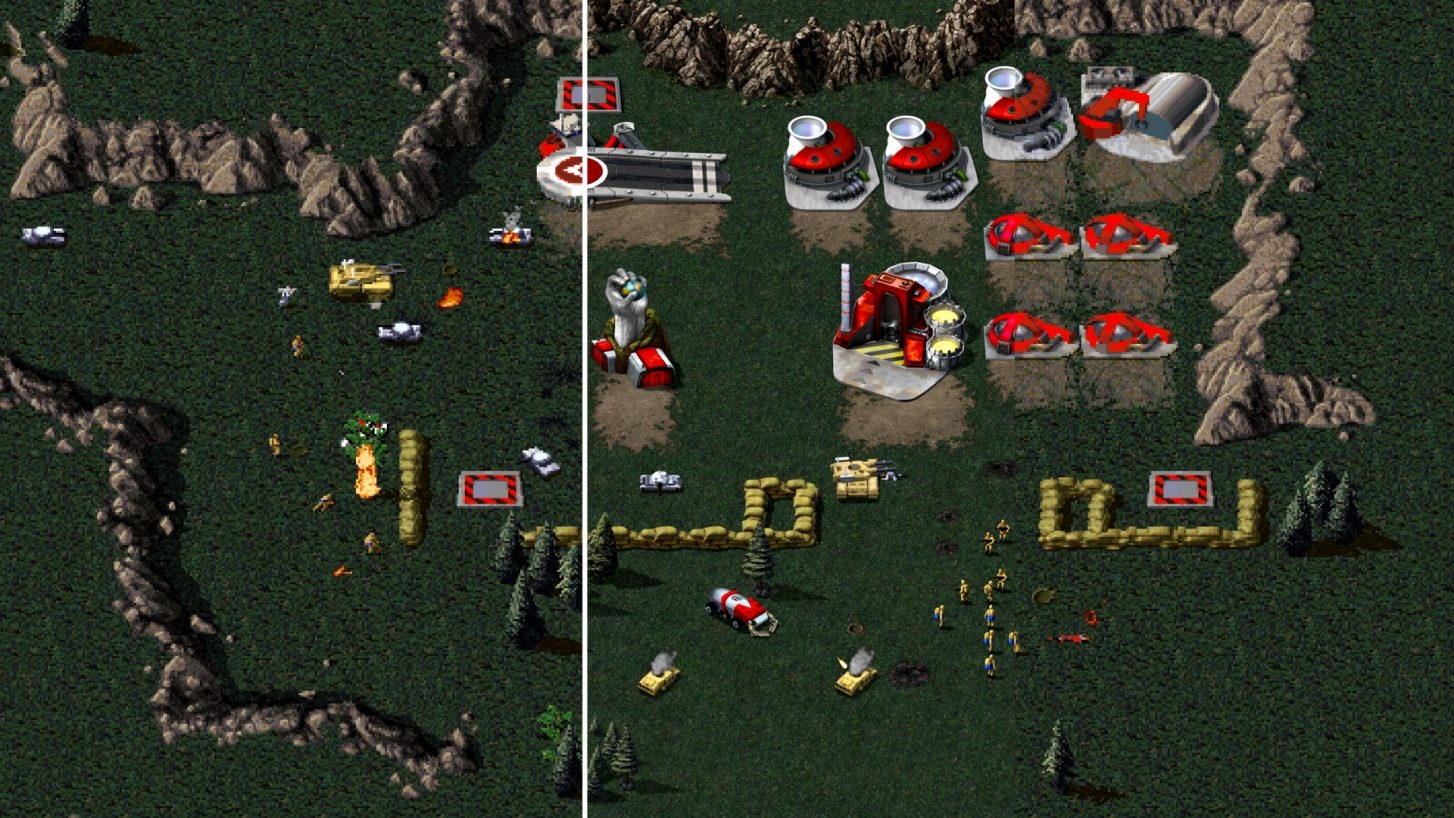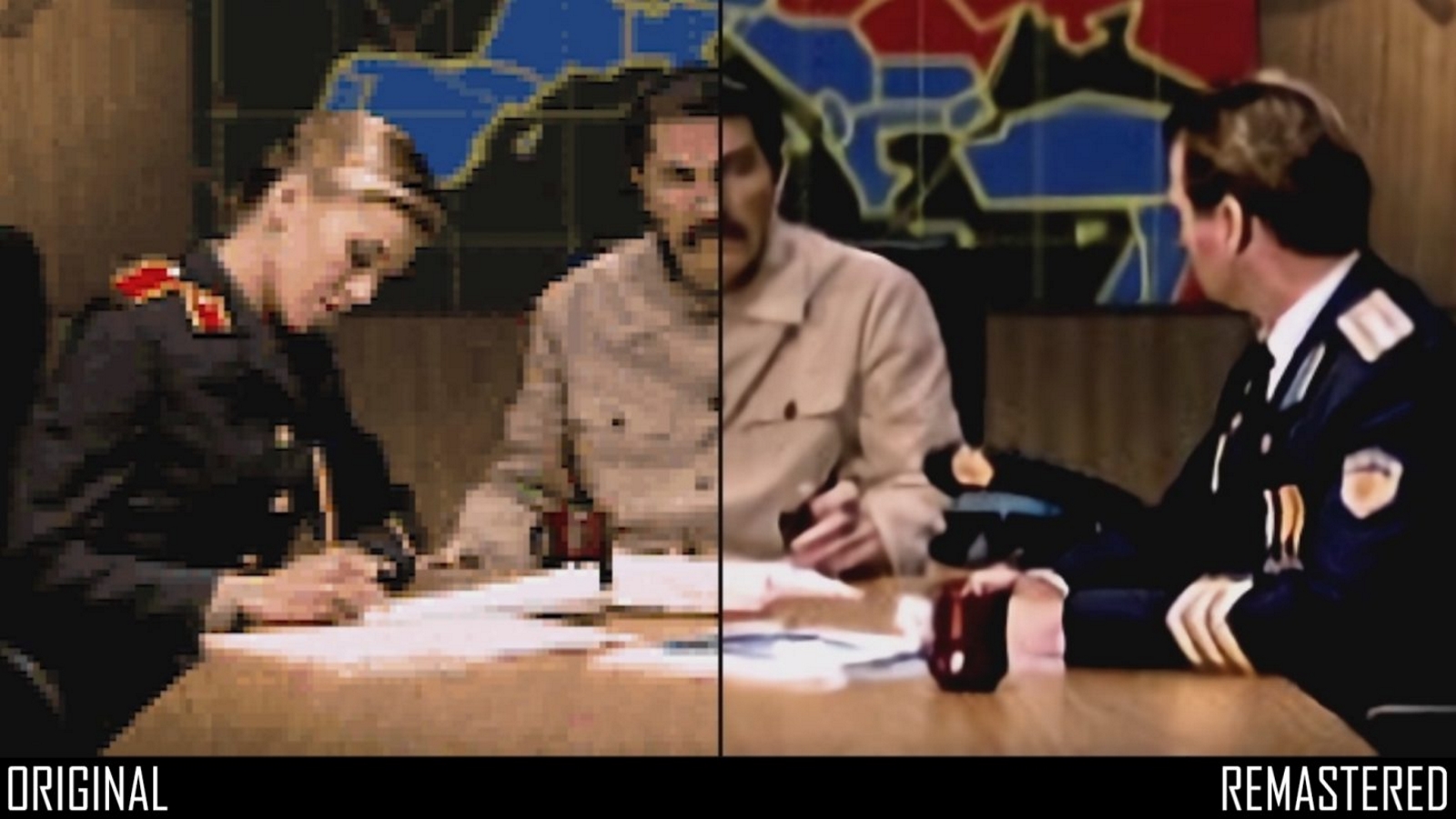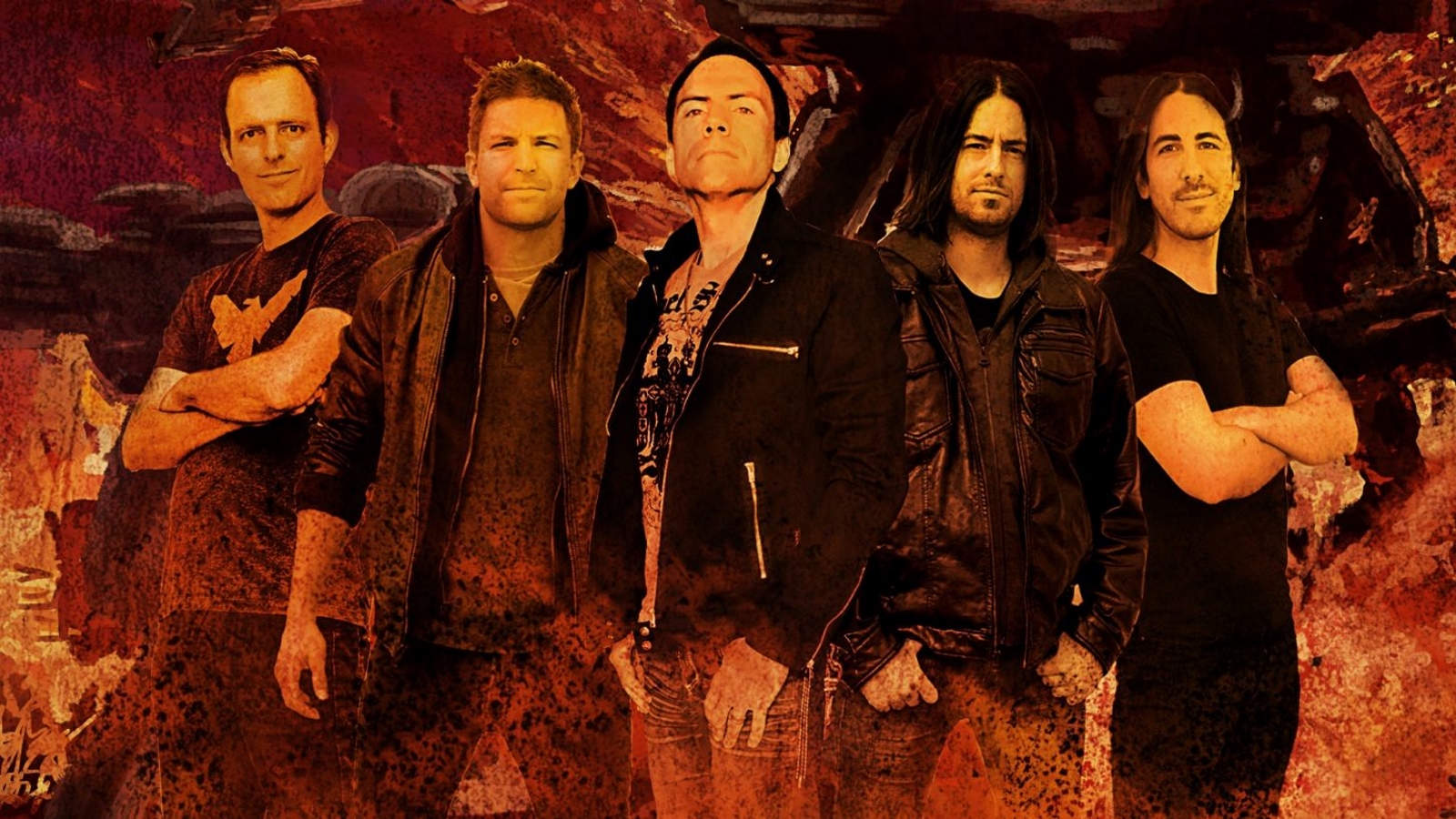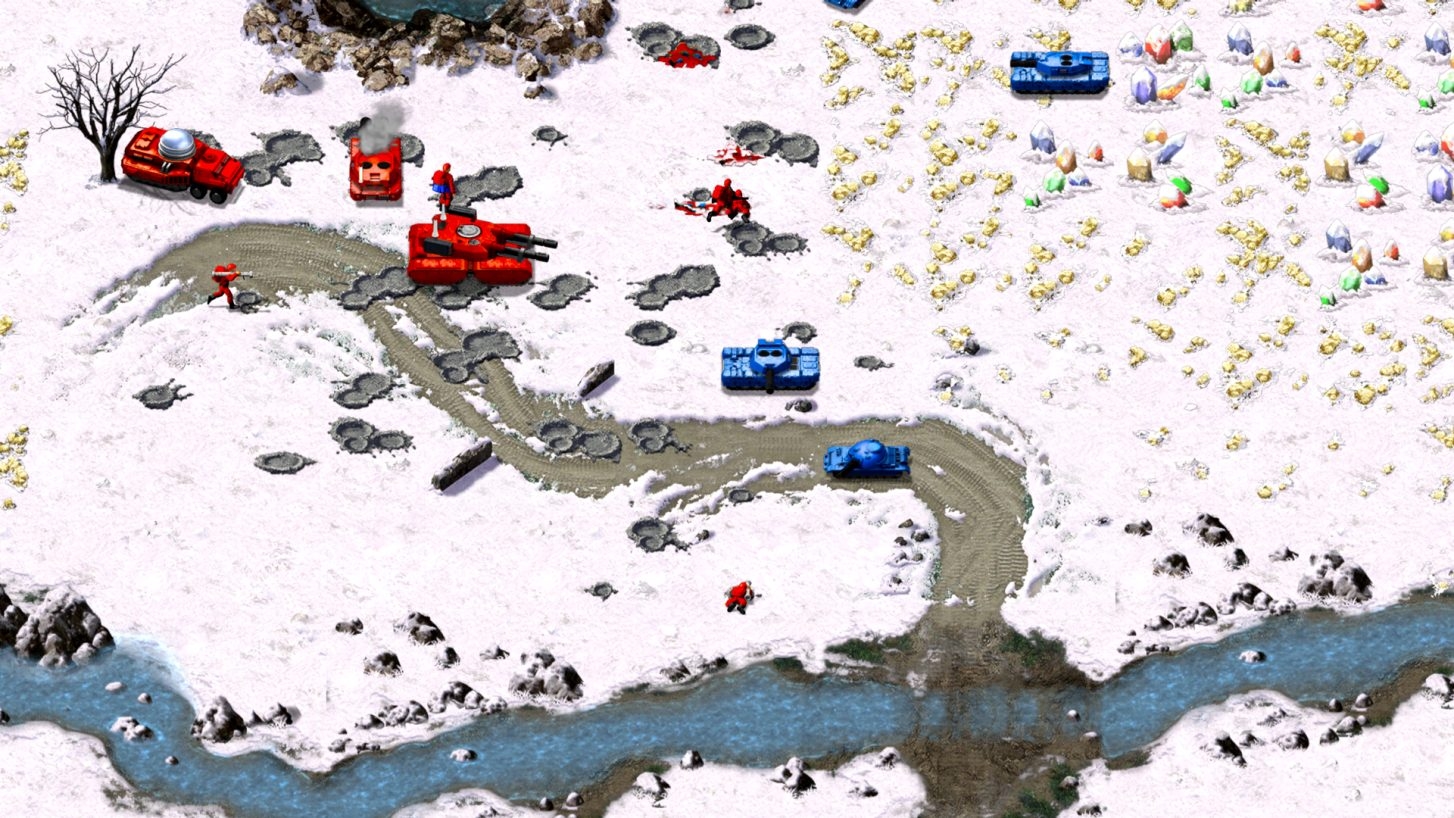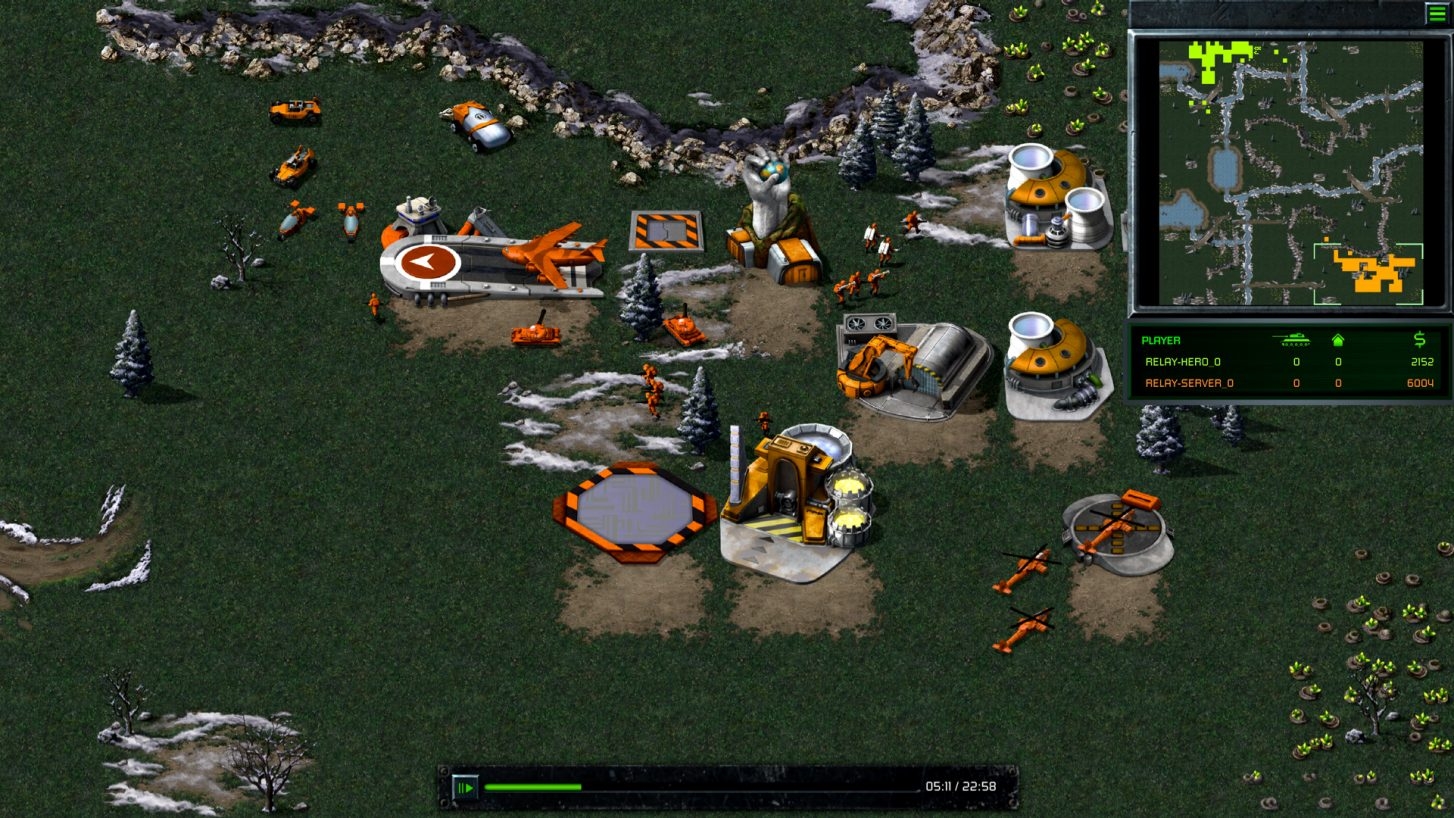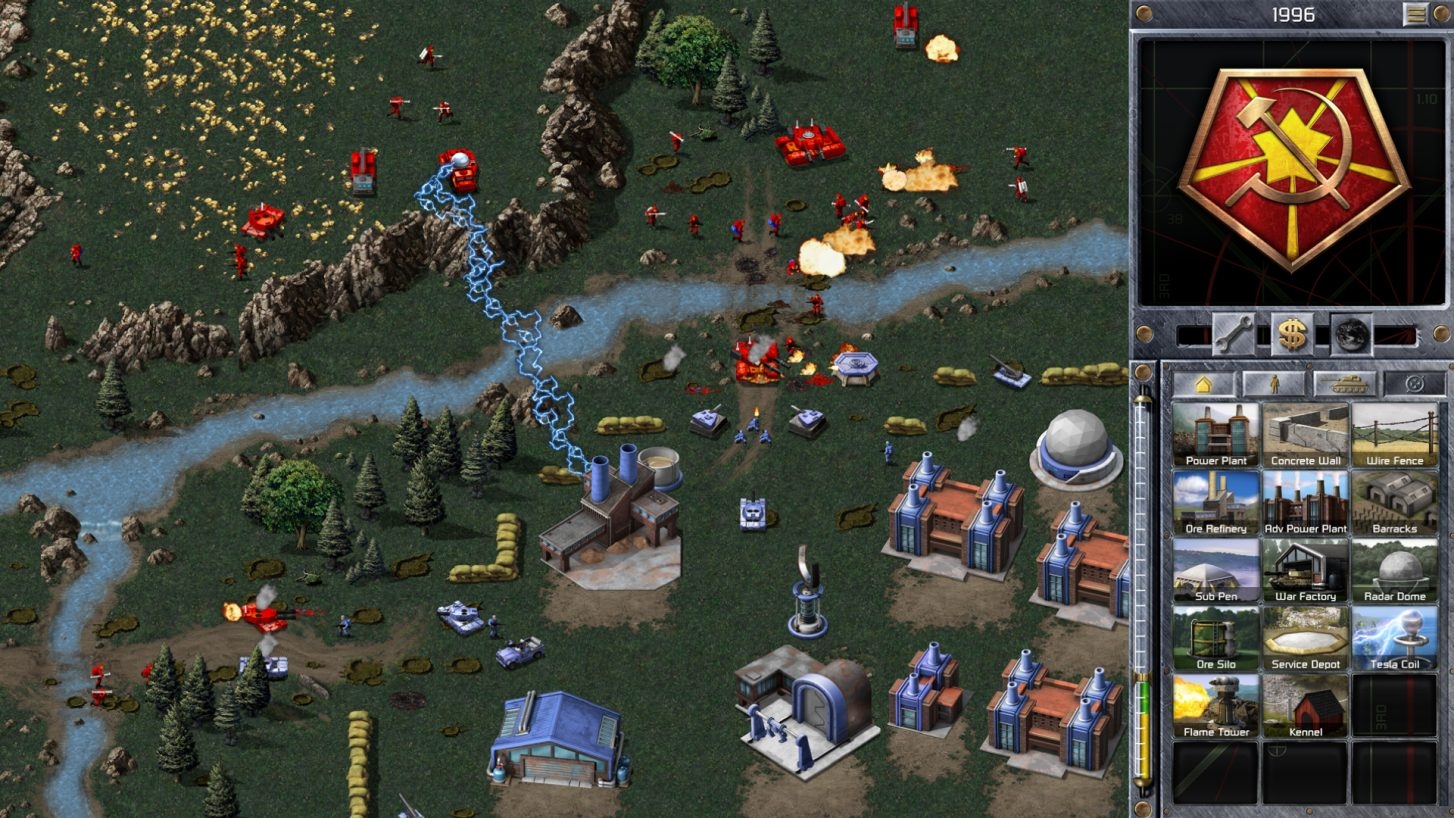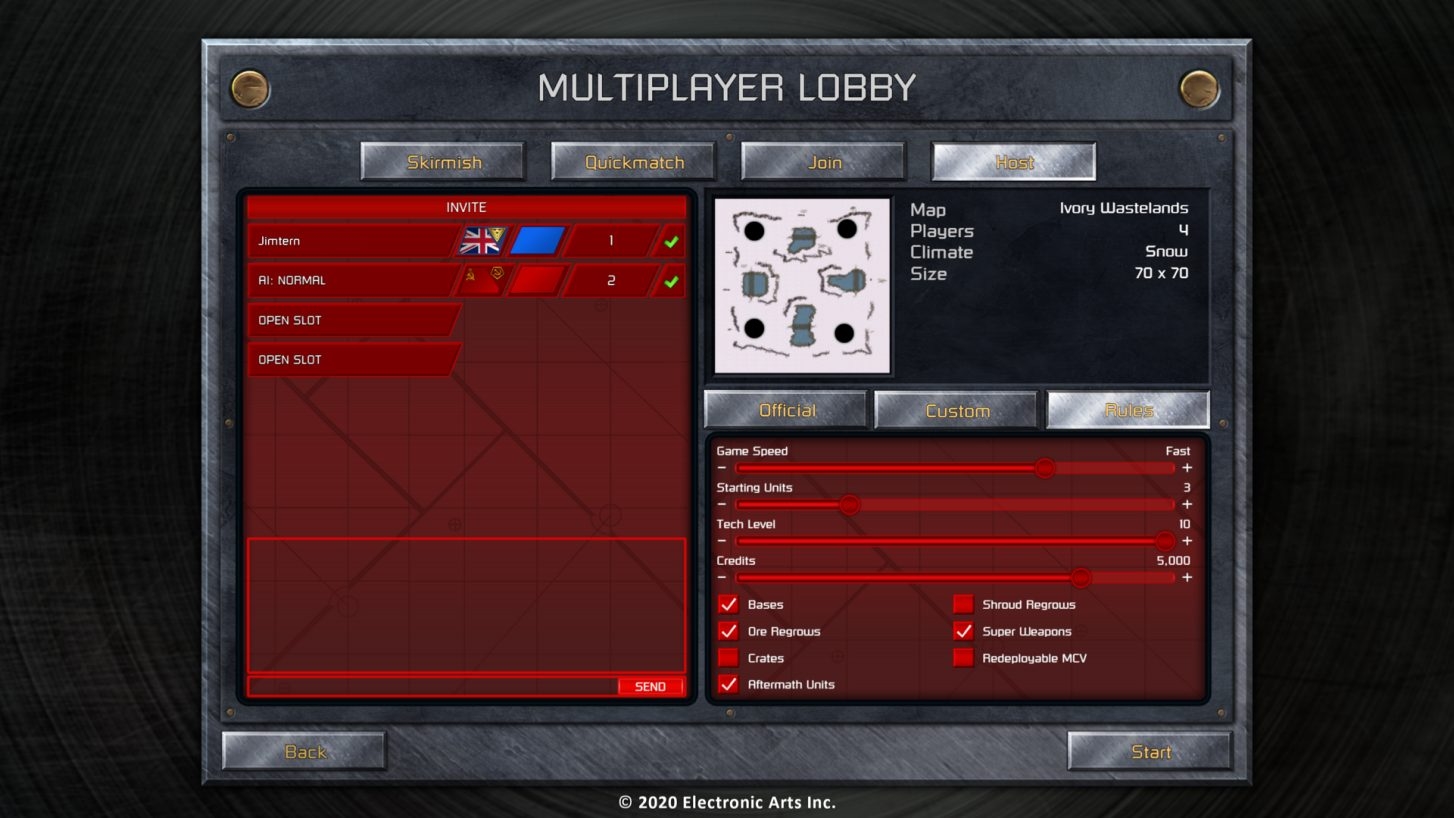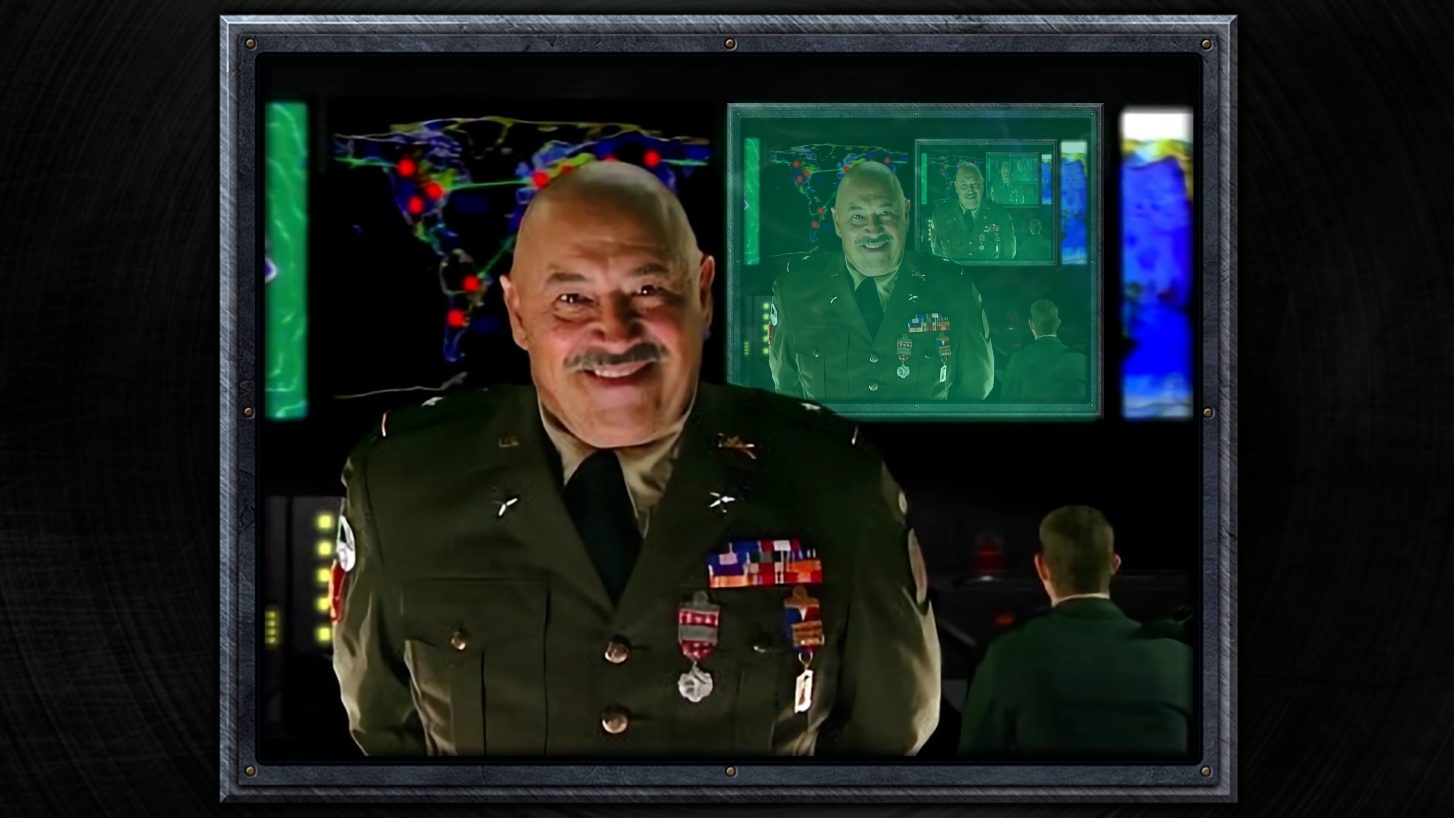I’ve no doubt that fans of these two grizzled soldiers will be delighted that they’ve been commanded back onto the battlefield of PC games. But as faithful as their rearming has been, they’re still working to a set of mechanics that are old enough to join the army themselves. The question, and the reason for this whole tortured allegory, remains: will these very old games have what it takes to conquer new hearts?
In truth, the C&C remaster project doesn’t have much warlike ambience at all. Instead, it glows with the energy of an amiable dad, who’s spent every Sunday for the last decade out in the garage, tinkering with a 1952 Morris Minor to make it good as new. The whole endeavour seems to have been a genuine labour of love, and chatting with lead producer Jim Vessella, who fell head over heels for C&C when he was 12, it’s easy to see that his affection for the games isn’t being hammed up for the sake of PR. Vessella, after all, is getting to work with his heroes. His team at EA has put the remasters together with the aid of Petroglyph Games, the studio formed by veterans of C&C’s original developer Westwood Studios, after it burst in 2003.
But Vessella acknowledges that at this point, nobody knows more about these games than those who’ve been steadfastly playing them for 25 years, and so he’s been working with players too. A lot of studios engaged in remakes and sequels bang on about “the community”, saying the phrase so often it becomes entirely meaningless. But I think Vessella’s earned it, frankly. C&C Remastered seems to have been shaped by constant interaction with fans of the game, with EA rebuilding systems that annoyed them, and keeping their hands off beloved relics. The fans have even been sucked into the work itself, building AI algorithms to increase the resolution, framerate and audio quality of old FMV sequences. It’s great to see, but I do hope they got paid. Watch, in mounting horror, as Stalin becomes larger and blurrier before your very eyes. If you keep watching to the end of the FMV, he stares through the screen for ten minutes straight, and then begins to climb out of your computer.
I guess the detail that really sold the whole hobbyist/enthusiast mentality for me - and which may have even earned Vessella the right to use the word ‘passion’ (which is more overused even than ‘community’), is the moment he hired a cover band on a whim. Vessella had been at videogame music event MAGfest in 2019, where C&C composer Frank Klepacki had performed a 90-minute set of tunes from the series, along with the adorably named Tiberian Sons, a band describing themselves as purveyors of “jimmie-rustling metal”, and specialising entirely in covers of tracks from Westwood and Petroglyph games. They’re great, in fairness: ‘Hell March’, from Red Alert, remains one of the best bits of music ever to appear in a game, and one of the beastliest basslines ever composed, and the Sons’ cover of it is extremely rowdy. They were hired on the spot, apparently. Klepacki and the Tiberian Sons. Bless their goofy hearts <3
There’s more of this sort of thing, too. You know how every single strategy game ever features an AI with a soothing voice and an acronym for a name, that offers you varying levels of tutorial advice and tells you when things are ready? That monolithic tradition began (as far as I’m aware) with Command & Conquer, and with the “Electronic Video Agent”, a.k.a EVA, a lady computer voiced by Kia Huntzinger. Huntzinger was an employee at Westwood, who produced the recorded messages for their phone system with such benign authority that audio director Paul Mudra decided she’d be good as the voice of a war computer, thus laying the foundation stone of one of PC gaming’s greatest cliches. Well, Huntzinger’s back for the remaster, and she says “our base is under attack,” and “construction complete” just like she did all those years ago. Kia Huntzinger, centre, with Frank Klepacki (left) and Jim Vessella (right)
If there was any doubt of the extent to which this project is aimed at nostalgia, let it be extinguished by the fact that the collection will be released not just on Steam and EA’s Origin platform, but as a Big Box Edition full of C&C merch, and an even-bigger-box 25th Anniversary Edition, with even more merch. They’re practically useless, given that each contain a steam code for the download of the actual game, but they’ll be packed with nostalgia for ardent fans, even going so far as to let them relive the way they bought games in the 90s. It’s clearly a winning prospect in that regard, as both have sold out already.
It’s all heartwarming stuff, and I really get what they’re going for: everything about this remaster makes me smile. But I still can’t help but feel it’s a tiny bit of a wasted opportunity. It sort of reminds me of the new Star Wars movies, which rely on “look, you remember this guy!” moments to do an awful lot of heavy lifting. And while nostalgia is a powerful fuel, it’s a volatile one, that burns out fast. Like tiberium. Remember tiberium? That mineral, from the games you liked in your teens? There it is, in the top right! Good times.
I’m really not trying to be snide here. I’m pretty much the same age as Vessella, so Red Alert ate a big chunk of my teens, just as C&C ate a big chunk of his. But I left it behind in the end, to play other games. That is, by and large, what what people do, even with games they love. Because for all that Westwood’s games were foundational to the RTS genre as we know it, they’ve been succeeded by many, many other games that have refined their formula since. Sure, there have been precious few new RTS games for a long while now, but even the state of the format in the mid-2000s made C&C look primitive.
And while it’s commendable that EA have done such a thorough job of communicating with C&C’s fans to shape this remaster, they’ve entered into something of a devil’s bargain by doing so. Because when you’re working to the specifications of The Community, any time you choose to take your own path with design, you risk your very own tiberium poisoning, as whole swathes of the market you’ve staked the success of your game on turn against you in outrage that you’ve not worked to their vision. You can command a horse to water, but you can’t make it conquer.
And so, for the sake of authenticity, the remastered Command & Conquer will still not have move-and-fire commands, for example, which other games have included as standard for decades. Even production queues, vital in mitigating RTS micromanagement slog, precipitated a massive round of internal debate before they were cautiously included in the remaster. Admittedly, the in-game UI has been rebuilt significantly - the sidebar is tons better, and saves a lot of scrolling, plus camera controls and unit selection have been reworked. Then there’s the new map editor, and the brand new multiplayer system. But all the changes have been made around the actual core of the game. And there’s the thing. Will today’s 12-year-old Vessellas and Crowleys, coming to this remaster for the first time, get hooked as they did in the 90s? Or will they just wonder what all the fuss is about, and laugh at their dads for getting so excited? In truth, I don’t know, because I’ve not had an opportunity to play yet. And because I’m not 12 anymore, I suppose. I mean, working strongly in the remaster’s favour in terms of impressing 12-year-olds is the spectacular tesla tank from Red Alert’s Aftermath expansion. I mean, just seeing it again is enough to make me want to play, to be quite honest.
It could work brilliantly. You’ll all now be sick and tired of me mentioning Age Of Empires 2: Definitive Edition every time I open my goddamn mouth, but it’s a great example of how to do a remaster. Yes, it made everything prettier, and it collected together all the scattered expansion packs for the original material (which to its credit, EA’s project also does, including the variant missions from console editions). But what drew me in was the new stuff. There were new civilisations to play! New maps! New campaigns! Monthly balance patches after launch, and new features such as auto-scouting and automatic reseeding for farms. The base game was still essentially the same, but there was just enough fresh meat to incentivise me into a nostalgia buy.
And it’s not just me. AOE2’s player base is still expanding rapidly, nearly six months after launch, and a big proportion of its new players weren’t even alive when the original game came out. But as a counterpoint, see the HD remaster of Praetorians, which lavished a lot of attention on graphical improvements, only to achieve a sobering lesson in how much strategy games have improved since the mid-90s. And then there’s Warcraft 3, which managed to demonstrate not just the dangers of changing too little, but the mess that ensues when hardcore fans feel they’ve not been given the product they asked for. This is the new multiplayer lobby, btw.
Vessella certainly respects what was achieved with Age Of Empires 2, and understands the perils of the Praetorian Way. Talking with me, he implied pretty heavily that should the C&C remaster do well on launch, he’d love to get the internal backing to produce new campaigns and the like. But it’s clear that was just too big a risk to take for launch. And while I completely understand the decision, I still wish he’d been able to just go ahead and roll the dice. Indeed, for all my misgivings, I’m rooting for the Command & conquer Remastered Collection to be a resounding success, so he can do just that. Seeing the Petroglyph team let loose on designing new content, with two and a half decades’ worth of additional game design experience under their belts, would be an utter joy. And especially when set to a jimmie-rustling cover of Hell March.
- Hell March, 1996
